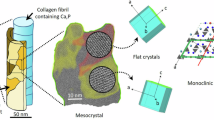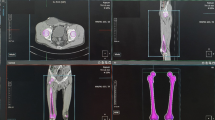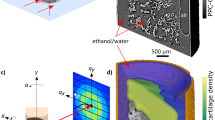Abstract
FROM the earliest experiments on X-ray diffraction by specimens of bone, it has been well known that in long bones, for example, femora, the c-axes of the hexagonal apatite crystals are preferentially orientated parallel to the long axis of the bone. In regard to sections of bones cut normal to the long axis, no one has reported any preferential orientation of the crystals. In fact, it has been repeatedly stated in the literature that there is no orientation of the crystals in the plane perpendicular to the long axis1.
This is a preview of subscription content, access via your institution
Access options
Subscribe to this journal
Receive 51 print issues and online access
$199.00 per year
only $3.90 per issue
Buy this article
- Purchase on SpringerLink
- Instant access to full article PDF
Prices may be subject to local taxes which are calculated during checkout
Similar content being viewed by others
References
Clark, J. H., Amer. J. Physiol., 98, 328 (1932). Clark, G. L., and Mogudich, J. N., Amer. J. Physiol., 108, 74 (1934). Henny, G. C., and Spiegel-Adolf, M., Amer. J. Physiol., 144, 632 (1945). Engstrom, A., and Zetterstrom, R., Exp. Cell Research, 2, 268 (1951).
Atkinson, H. F., Brit. Dent. J., 88, 29 (1950).
Chesley, F. C., Rev. Sci. Instr., 18, 422 (1947).
Author information
Authors and Affiliations
Rights and permissions
About this article
Cite this article
CLARK, S., IBALL, J. Orientation of Apatite Crystals in Bone. Nature 174, 399–400 (1954). https://doi.org/10.1038/174399a0
Issue date:
DOI: https://doi.org/10.1038/174399a0
This article is cited by
-
Calcium orthophosphates (CaPO4): occurrence and properties
Progress in Biomaterials (2016)



